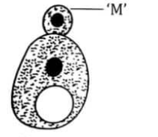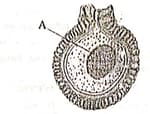EASY
Earn 100
In Hydra, reproduction is by
(a)Polyembryony
(b)Sexual and asexual method
(c)Parthenogenesis
(d)Encystment
100% studentsanswered this correctly
Important Questions on Reproduction in Organisms
MEDIUM
Statement Planaria possesses high degree of regeneration capacity.
Reason Planaria exhibits 'polyembryony'.
The correct answer is
MEDIUM
EASY
Which of the following is not a defining feature of all living organisms?
EASY
EASY
Identify the asexual reproductive structure in the following diagram:

EASY
Mention the asexual reproductive structures of the following:
Sponges
MEDIUM
Lateral branches arise from the basal and underground part of the main stem
Branches bent and grow downwards
Branches grow obliquely upwards
Lateral branches arise from the base of the main axis and are aerial
EASY
EASY
MEDIUM
Name the following:
The types of asexual reproduction seen in Planaria.
MEDIUM
EASY
HARD
Which structure is formed from the “A” part of the given diagram?

EASY
MEDIUM
EASY
MEDIUM
EASY
EASY
Match the following
| List-I | List-II | ||
| (A) | Longitudinal binary fission | (I) | Paramoecium |
| (B) | Transverse binary fission | (II) | Amoeba |
| (C) | Sporogony | (III) | Pleurobrachia |
| (D) | Sporulation | (IV) | Plasmodium |
| (V) | Euglena |

